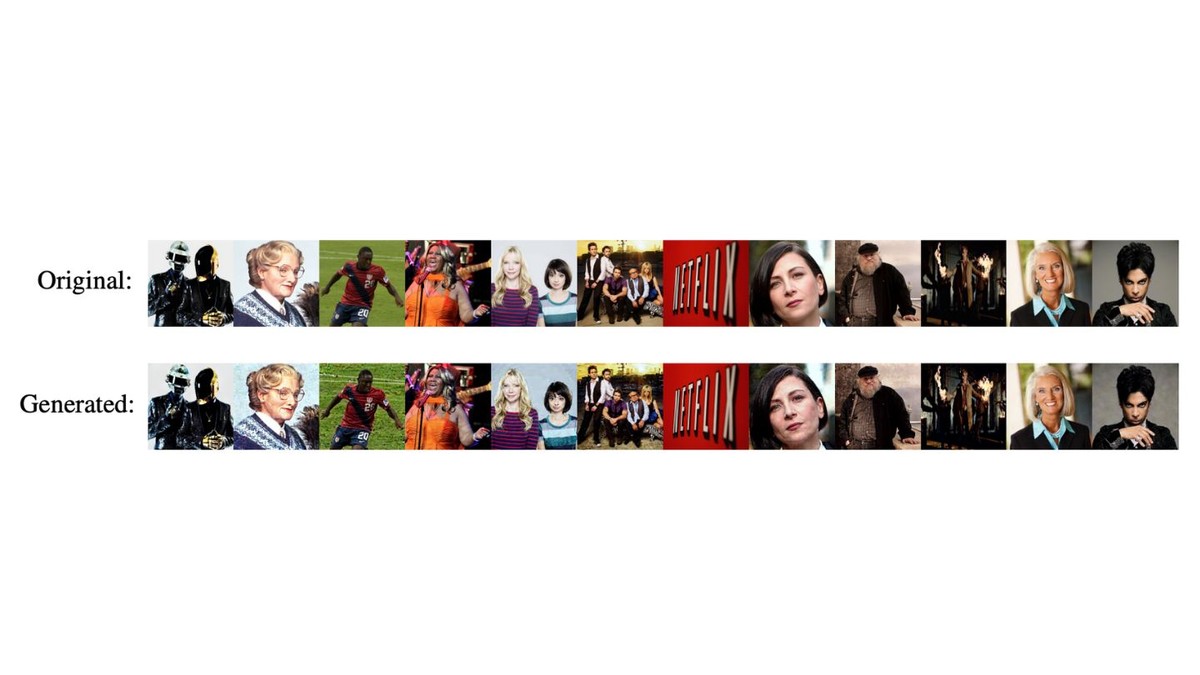- Reaction score
- 1,678
Researchers have found that image-generation AI tools such as the popular Stable Diffusion model memorize training images—typically made by real artists and scraped for free from the web—and can spit them out as nearly-identical copies.
According to a preprint paper posted to arXiv on Monday, researchers extracted over a thousand training examples from the models, which included everything from photographs from individual people, to film stills and copyrighted press photos, to trademarked company logos, and found that the AI regurgitated many of them nearly exactly.
When so-called image diffusion models—a category that includes Stable Diffusion, OpenAI's DALL-E 2, and Google's Imagen—are fed different images as training data, the idea is that they are able to add noise to images, learn to remove the noise, and after that, produce original images using that learning process based on a prompt by a human user. Such models have been the focus of outrage because they are trained on work from real artists (typically, without compensation or consent), with allusions to their provenance emerging in the form of repeating art styles or mangled artist signatures.
However, the researchers of the paper demonstrate that sometimes the AI model will generate the exact same image it was trained on with only inconsequential changes like more noise in the image.
“The issue of memorization is that in the process of training your model, it might sort of overfit on individual images, where now it remembers what that image looks like, and then at generation time, it inadvertently can regenerate that image,” one of the paper’s co-authors Eric Wallace, a Ph.D. student at the University of Berkeley, told Motherboard. “So it's kind of an undesirable quantity where you want to minimize it as much as possible and promote these kinds of novel generations."
One example the researchers provide is an image of American evangelist Ann Graham Lotz, taken from her Wikipedia page. When Stable Diffusion was prompted with “Ann Graham Lotz,” the AI spit out the same image, with the only difference being that the AI-generated image was a bit noisier. The distance between the two images was quantified by the researchers as having nearly identical pixel compositions, which qualified the image as being memorized by the AI.
The researchers demonstrated that a non-memorized response can still accurately depict the text that the model was prompted with, but would not have a similar pixel makeup and would deviate from any training images. When they prompted Stable Diffusion with “Obama,” an image that looked like Obama was produced, but not one that matched any image in the training dataset. The researchers showed that the four nearest training images were very different from the AI-generated image.
The ability of diffusion models to memorize images creates a major copyright issue when models reproduce and distribute copyrighted material. The ability to regenerate pictures of certain individuals in a way that still maintains their likenesses, such as in Obama’s case, also poses a privacy risk to people who may not want their images being used to train AI. The researchers also found that many of the images used in the training dataset were copyrighted images that were used without permission.

 www.vice.com
www.vice.com
According to a preprint paper posted to arXiv on Monday, researchers extracted over a thousand training examples from the models, which included everything from photographs from individual people, to film stills and copyrighted press photos, to trademarked company logos, and found that the AI regurgitated many of them nearly exactly.
When so-called image diffusion models—a category that includes Stable Diffusion, OpenAI's DALL-E 2, and Google's Imagen—are fed different images as training data, the idea is that they are able to add noise to images, learn to remove the noise, and after that, produce original images using that learning process based on a prompt by a human user. Such models have been the focus of outrage because they are trained on work from real artists (typically, without compensation or consent), with allusions to their provenance emerging in the form of repeating art styles or mangled artist signatures.
However, the researchers of the paper demonstrate that sometimes the AI model will generate the exact same image it was trained on with only inconsequential changes like more noise in the image.
“The issue of memorization is that in the process of training your model, it might sort of overfit on individual images, where now it remembers what that image looks like, and then at generation time, it inadvertently can regenerate that image,” one of the paper’s co-authors Eric Wallace, a Ph.D. student at the University of Berkeley, told Motherboard. “So it's kind of an undesirable quantity where you want to minimize it as much as possible and promote these kinds of novel generations."
One example the researchers provide is an image of American evangelist Ann Graham Lotz, taken from her Wikipedia page. When Stable Diffusion was prompted with “Ann Graham Lotz,” the AI spit out the same image, with the only difference being that the AI-generated image was a bit noisier. The distance between the two images was quantified by the researchers as having nearly identical pixel compositions, which qualified the image as being memorized by the AI.
The researchers demonstrated that a non-memorized response can still accurately depict the text that the model was prompted with, but would not have a similar pixel makeup and would deviate from any training images. When they prompted Stable Diffusion with “Obama,” an image that looked like Obama was produced, but not one that matched any image in the training dataset. The researchers showed that the four nearest training images were very different from the AI-generated image.
The ability of diffusion models to memorize images creates a major copyright issue when models reproduce and distribute copyrighted material. The ability to regenerate pictures of certain individuals in a way that still maintains their likenesses, such as in Obama’s case, also poses a privacy risk to people who may not want their images being used to train AI. The researchers also found that many of the images used in the training dataset were copyrighted images that were used without permission.

AI Spits Out Exact Copies of Training Images, Real People, Logos, Researchers Find
The regurgitation of training data exposes image diffusion models to a number of privacy and copyright risks.



